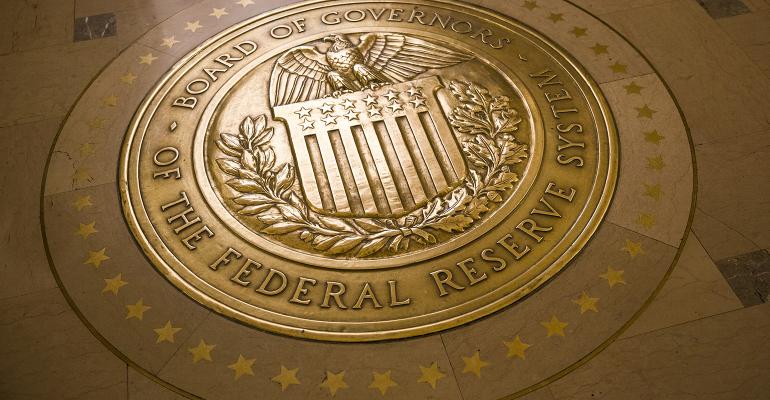(Bloomberg) -- The Federal Reserve delivered such a gift to the exchange-traded fund industry amid the throes of the pandemic that analysts say its exit will hardly be felt.
The central bank on Monday will start reversing its surprise decision last March to scoop up bond ETFs as part of efforts to keep credit flowing amid the coronavirus crash. That move ushered a surge of inflows into bond ETFs, meaning that even though the Fed itself ended up buying just $8.6 billion of debt funds, the market ballooned to be worth $1.1 trillion.
The Fed’s foray into the credit market was perceived as a stamp of approval on a structure that’s long been the subject of criticism and hyperbole. Critics cautioned that fixed-income ETFs -- which trade much more frequently than the bonds they hold -- would exacerbate selling pressure in a downturn. Those warnings grew louder in March, when some of the biggest debt funds saw their prices fall well below that of their holdings as cash bond markets seized up.
While the Fed’s intervention helped smooth an effectively frozen bond market, several analysts say investors shouldn’t worry about the central bank’s unwinding of those positions. The reason is that they are small relative to the broader credit ETF universe.
“It was very important that they stepped in and showed they had faith in the structure and the system, and it worked,” said Dave Nadig, the chief investment officer at data provider ETF Trends. “The $8 billion in bond ETFs held by the Fed are really pretty irrelevant to the market as a whole.”
Bond ETFs absorbed a record $206 billion in 2020, shattering the previous year’s all-time high of $154 billion. The bulk of those flows came in the weeks and months after the Fed initially said that it would begin purchasing credit funds in late March. About $11.2 billion flooded into the $39.5 billion iShares iBoxx $ Investment Grade Corporate Bond ETF (ticker LQD) in the weeks between the announcement and the central bank’s first ETF purchases last May.
However, front-runners accounted for just a fraction of overall bond ETF inflows in 2020, according to Bloomberg Intelligence’s Eric Balchunas. The massive rally spurred by extraordinary monetary easing combined with a powerful Fed backstop was a bigger draw, he said -- LQD jumped 8% in 2020, while the $13 billion iShares 20+ Year Treasury Bond ETF (ticker TLT) soared 16%.
“In retrospect, that might have been the closest thing to a free lunch that a trade could ever be,” BI ETF analyst Balchunas said. “But that was a tiny part of the monster inflows that went into bond funds.”
This year’s flows have been tepid in comparison as the U.S. emerges from the pandemic, stoking inflation fears and souring appetite for long-duration assets. Fixed-income ETFs have taken in about $90 billion so far in 2021, with funds tracking bonds that mature in three years or fewer attracting most of that cash.
Read more: Fed Is Among the Biggest Winners From Its Foray Into Credit ETFs
The Fed’s buying was concentrated in investment-grade funds. The central bank has a $2.4 billion stake in LQD, followed by a $1.5 billion holding in the $39.6 billion Vanguard Short-Term Corporate Bond ETF (ticker VCSH). In high-yield, its biggest purchase was the $9.9 billion SPDR Bloomberg Barclays High Yield Bond ETF (ticker JNK), of which the Fed owns roughly $576 million.
The U.S. central bank will begin to liquidate those holdings on June 7, the New York Fed said Thursday -- a process it will pause should there be “a material deterioration in market functioning.” ETF investors have taken the news in stride, pouring an additional $2.5 billion into bond funds in the past week alone, according to Bloomberg Intelligence data.
“It’s totally relevant from a symbolism point of view than from an actual dollar amount,” Balchunas said. “It’s really the signal they provided to the market.”





